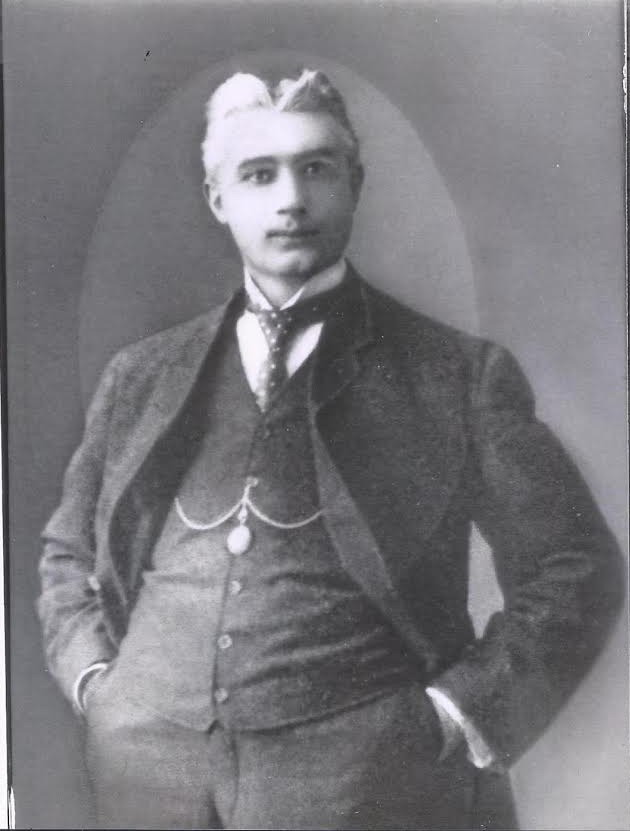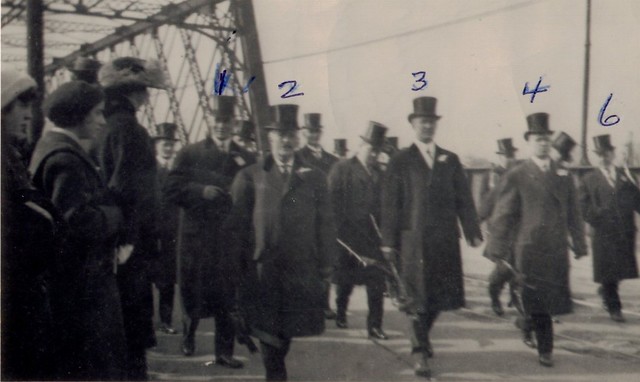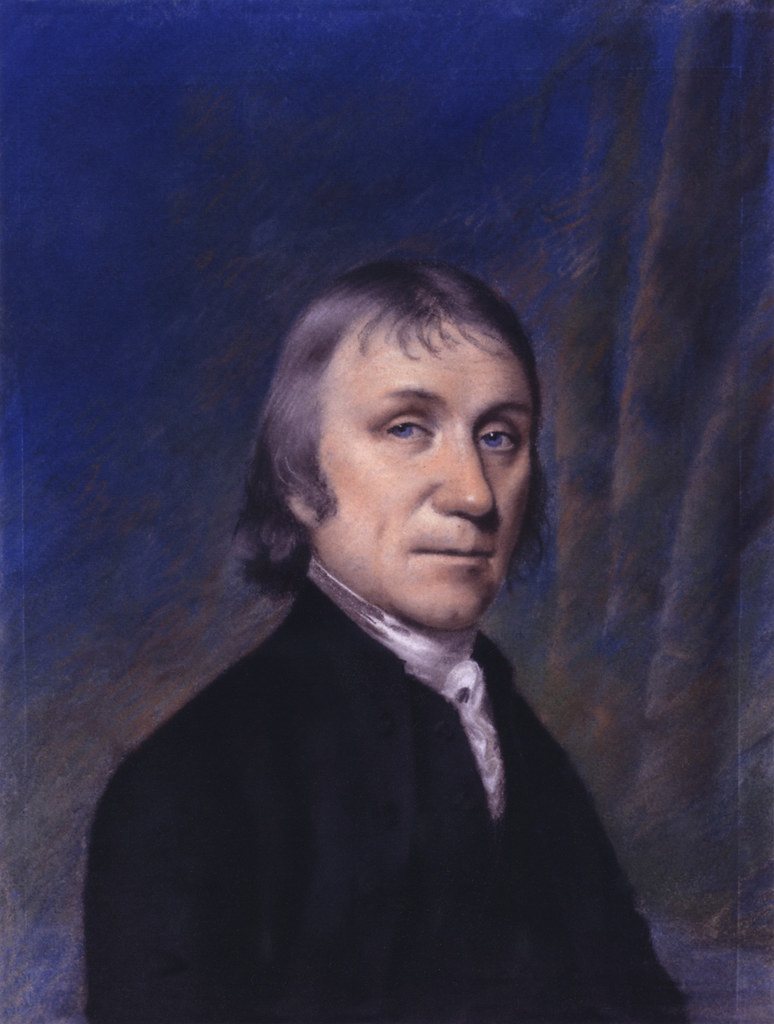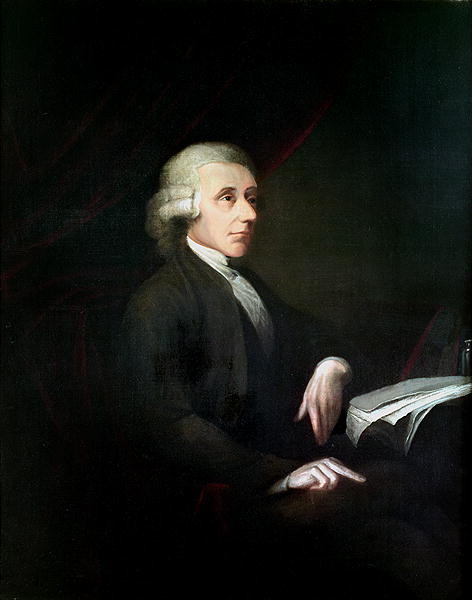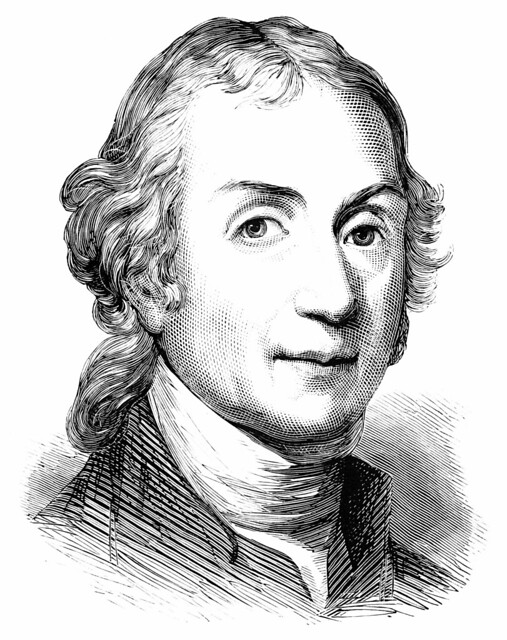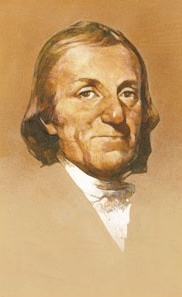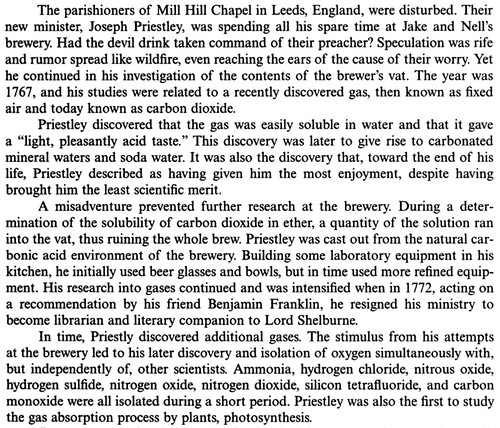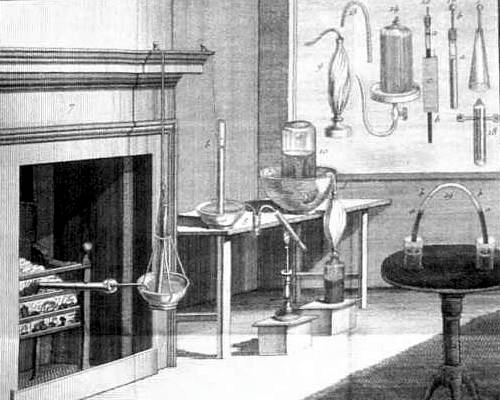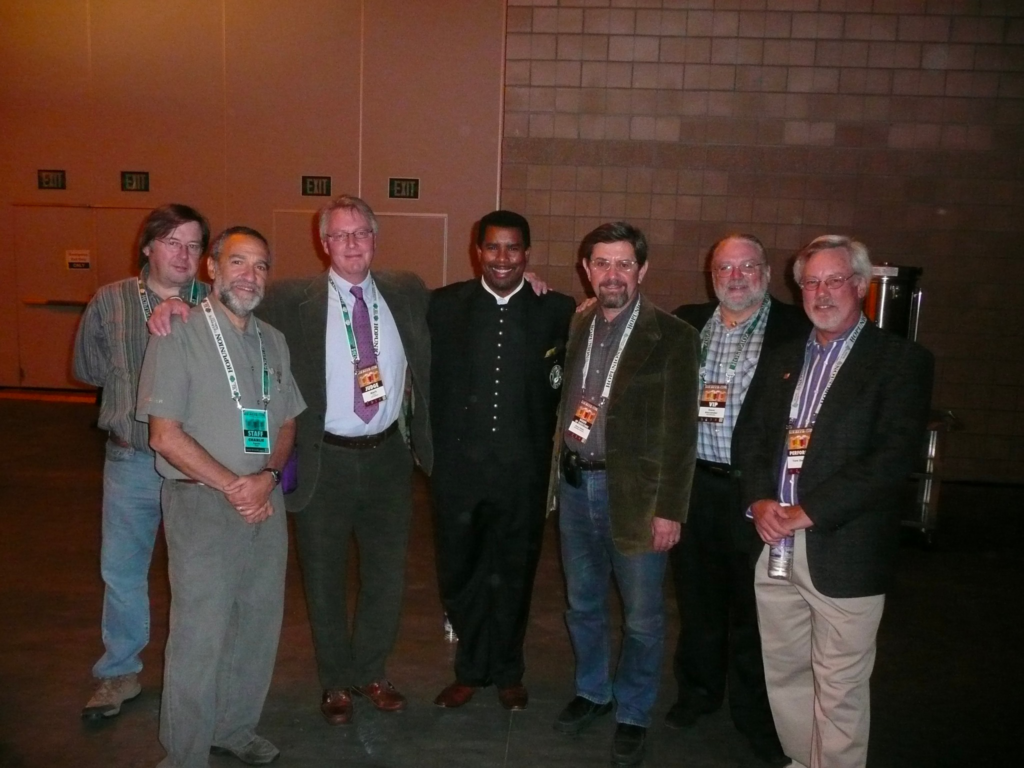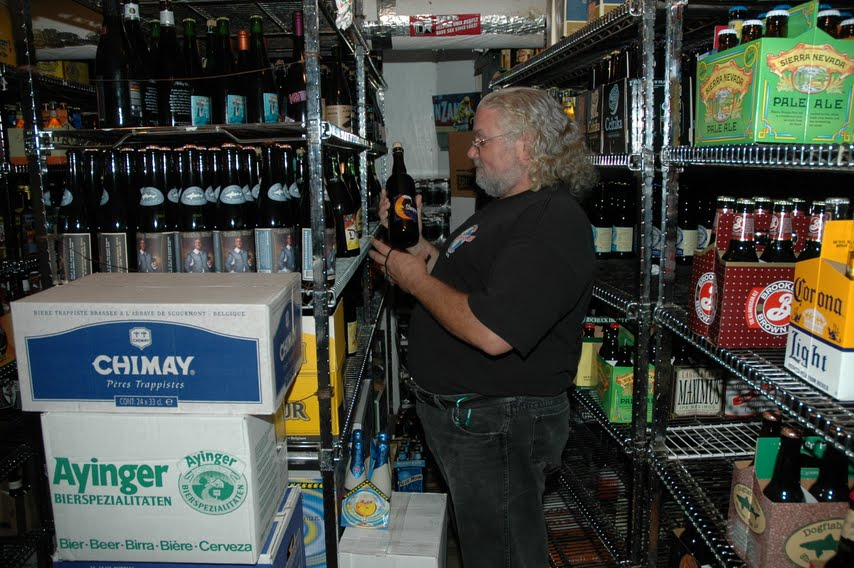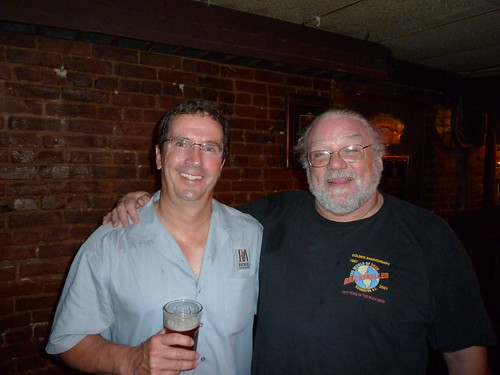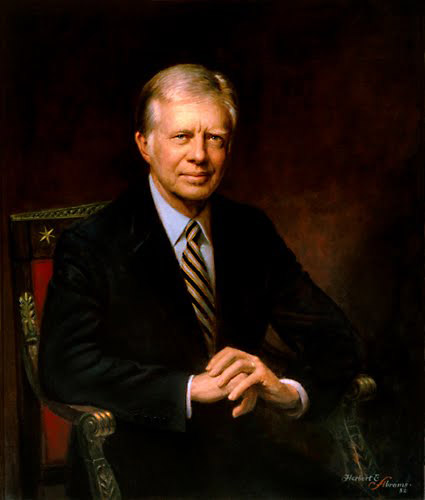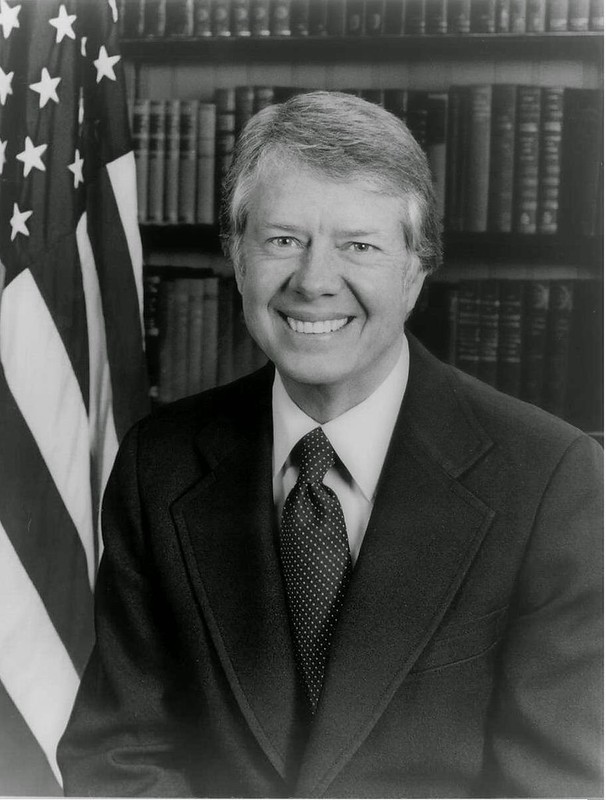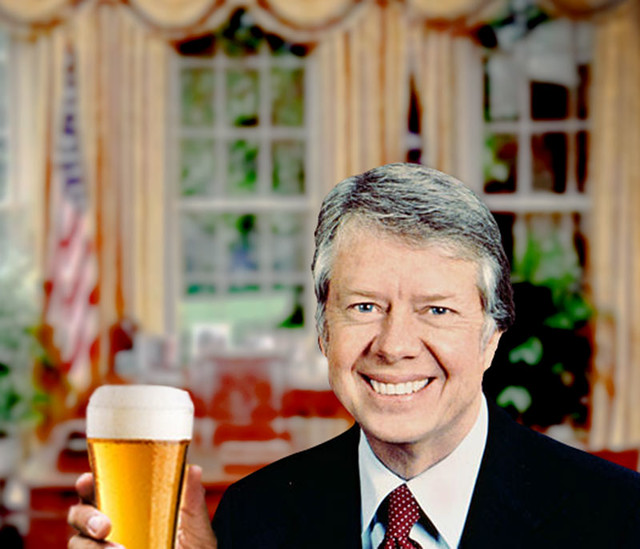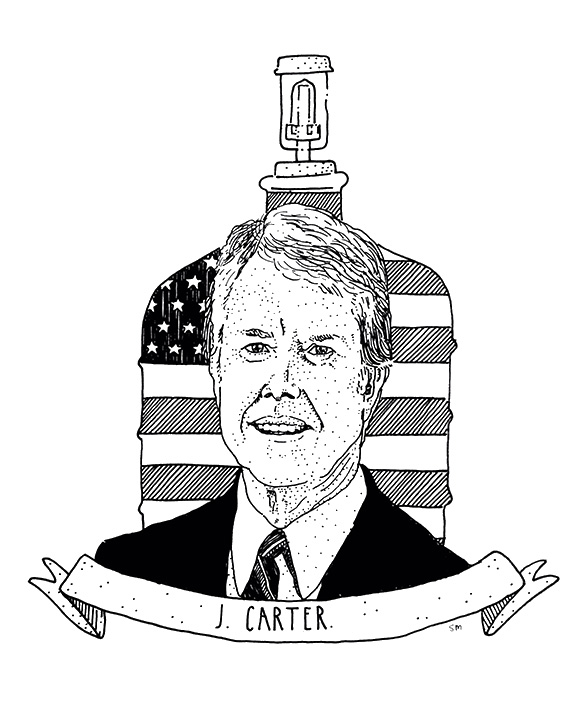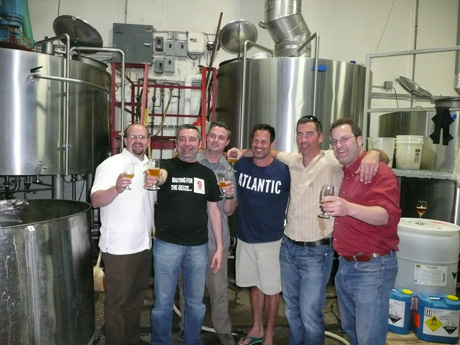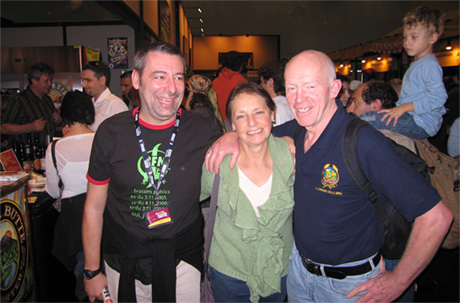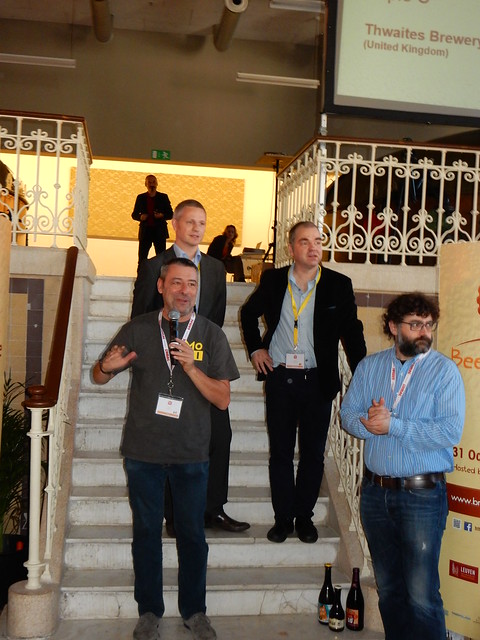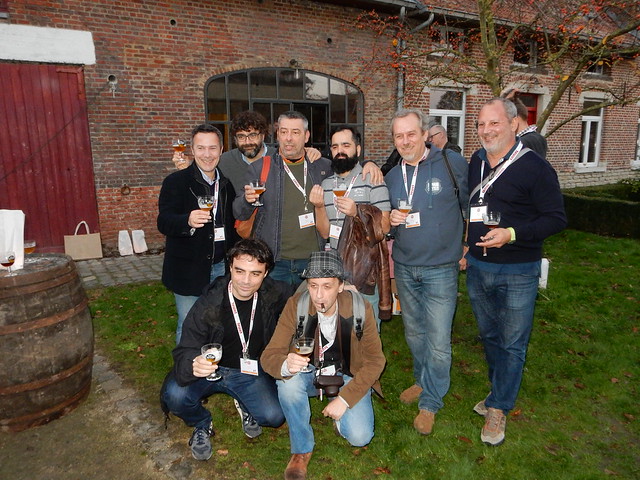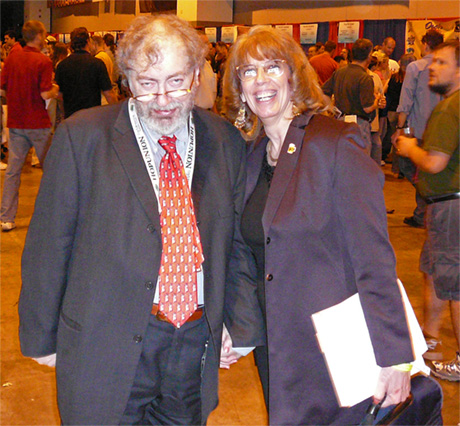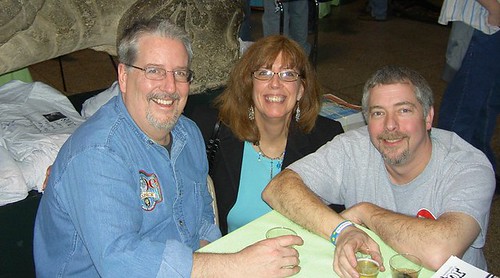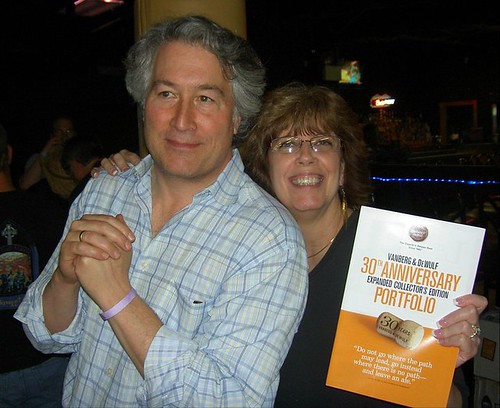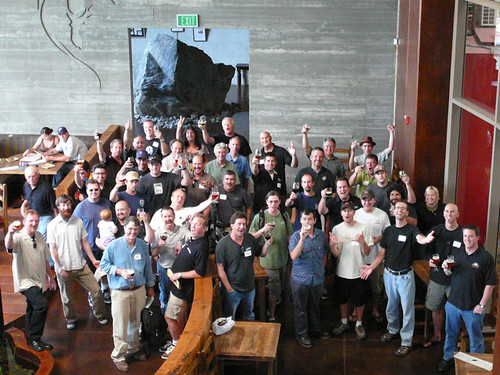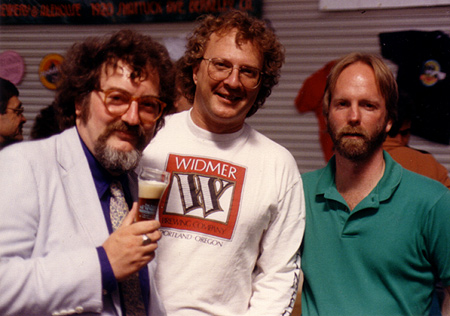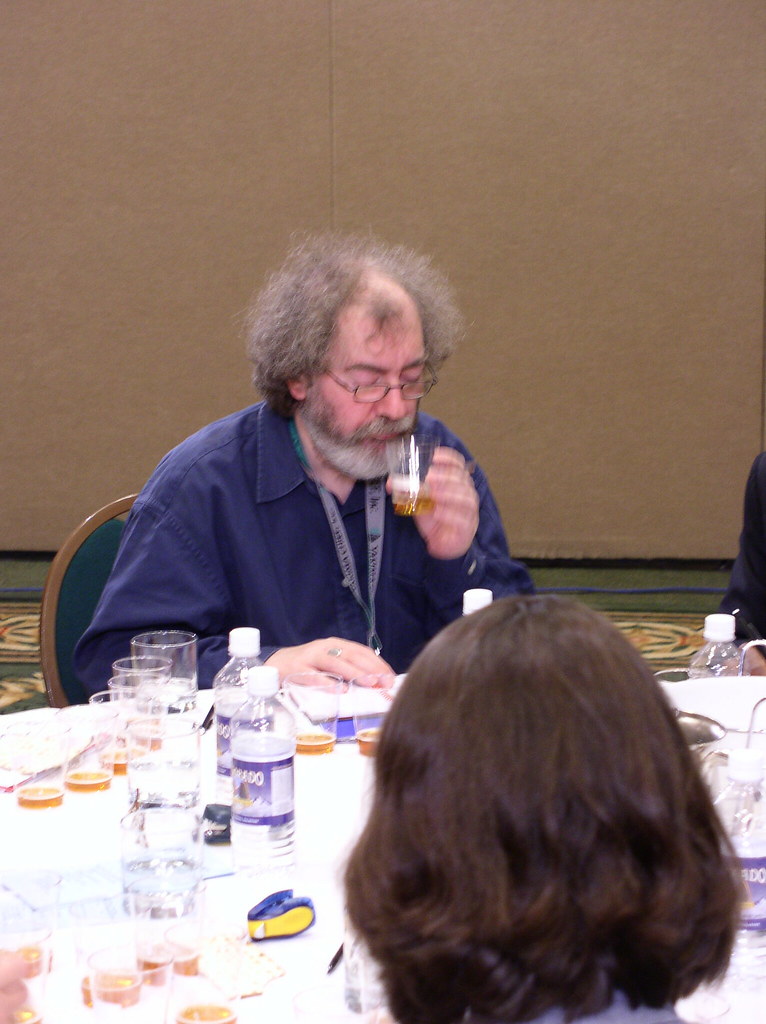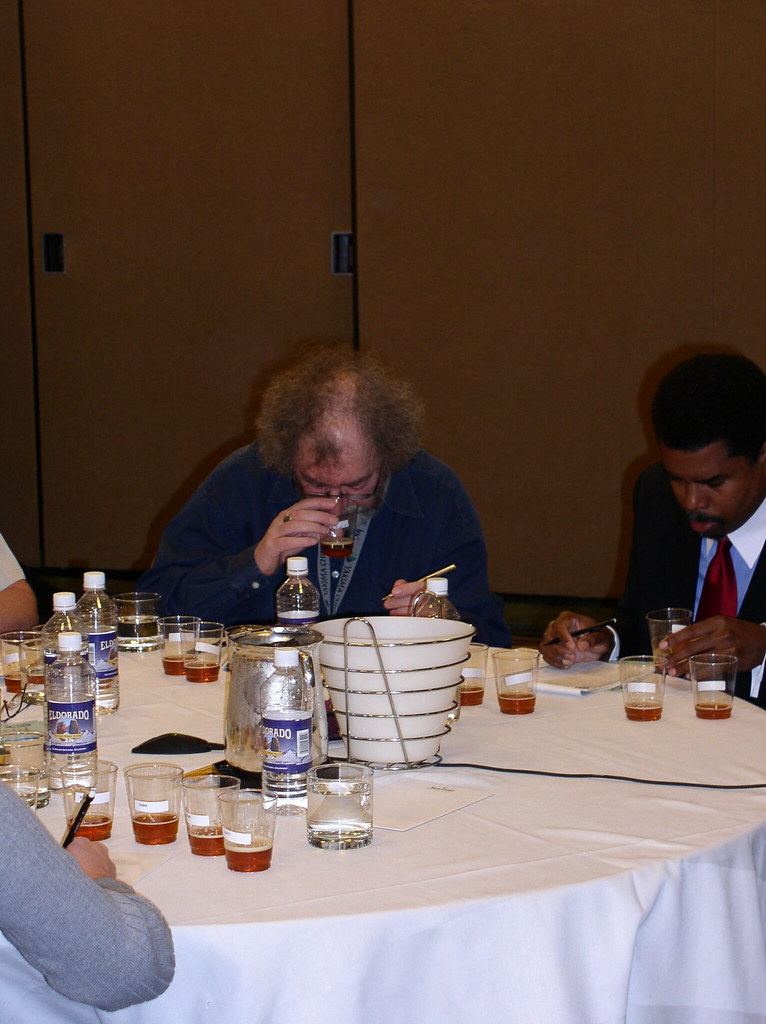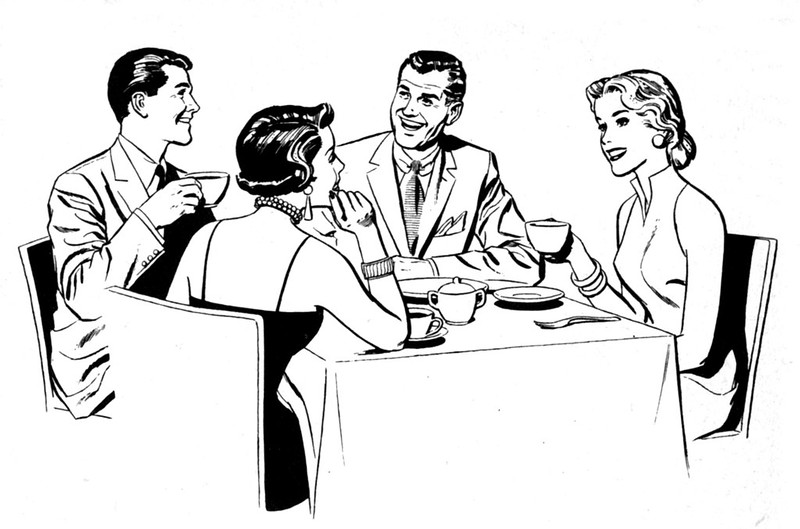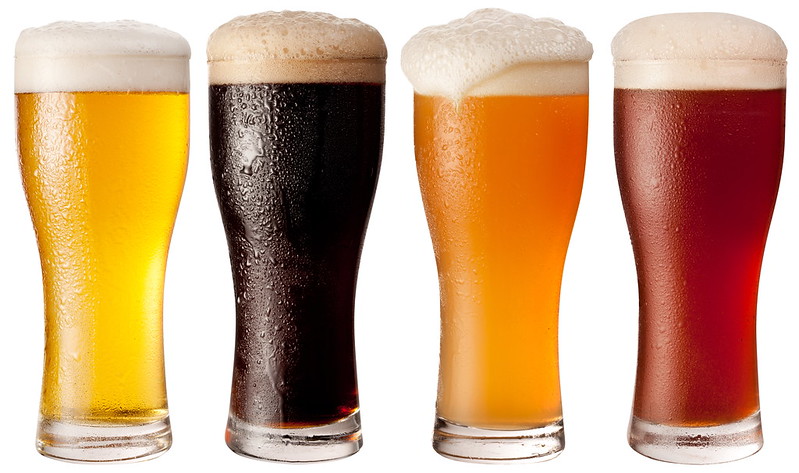Unless you’ve been living under a rock, you know last night was the National Toast to Michael Jackson, a benefit for Parkinson’s Disease and a chance to all raise a glass to the leading light in beer writing. I went to the Toronado in San Francisco to join the toast. Real Beer was there with a camera, documenting people’s thoughts about Michael and his legacy. They interviewed a number of us, asking us each the same seven questions and apparently this was going on in bars across the country with the idea of editing it all together in one media package.
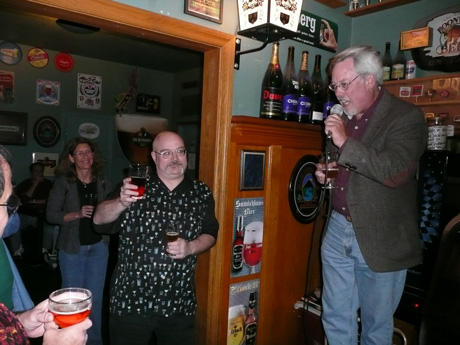
Celebrator publisher Tom Dalldorf was on hand to emcee the toast as Toronado owner Dave Keene looks on, glass in hand, ready for the toast.

And exactly 6:00 p.m. Pacific Daylight Time, we all raised our glasses, as hopefully millions more did across the continent.
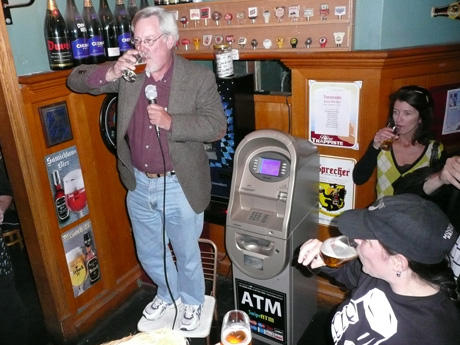
And then drank to Michael’s memory.
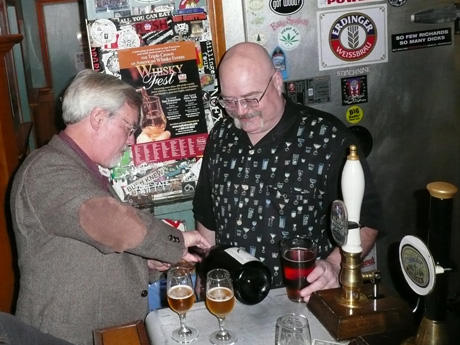
Dave opened a big bottle of Russian River Temptation.
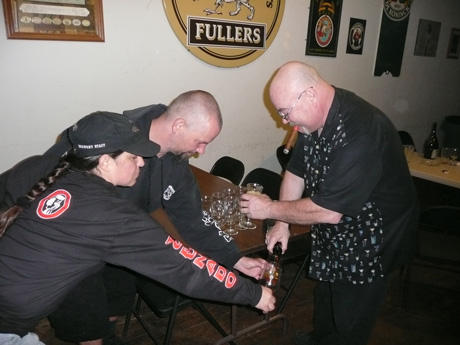
After the toast, those of us that stayed adjourned to the back room for some heated games of washoes. Dave and I won at least ten straight before finally being unseated by Rodger Davis and Melissa Myers. Dave also opened a very big bottle of the anniversary beer Vinnie Cilurzo made for the Toronado’s 10th anniversary in August at Russian River Brewing.
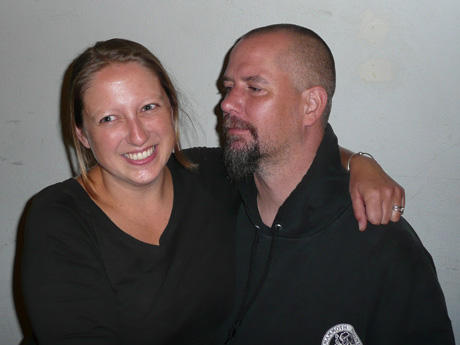
Celebrating their one-year wedding anniversary, Claudia and Rodger Davis. Claudia works at 21st Amendment and Rodger is the former brewer at Drake’s. Believe it or not, this was the only picture I could get where Rodger did not have his mouth open with his tongue wagging.

